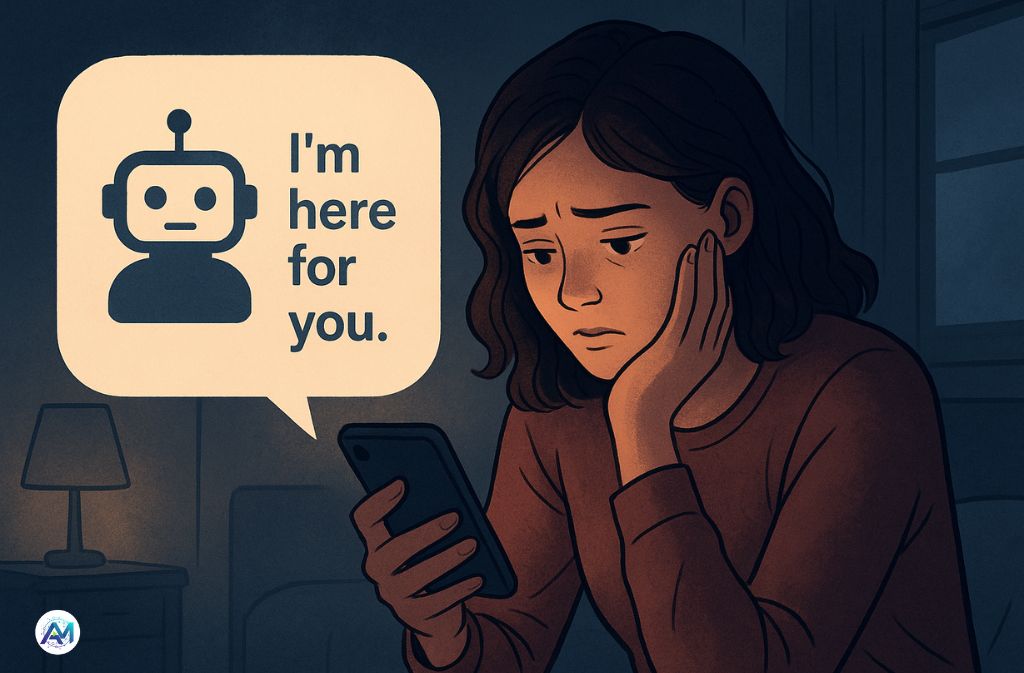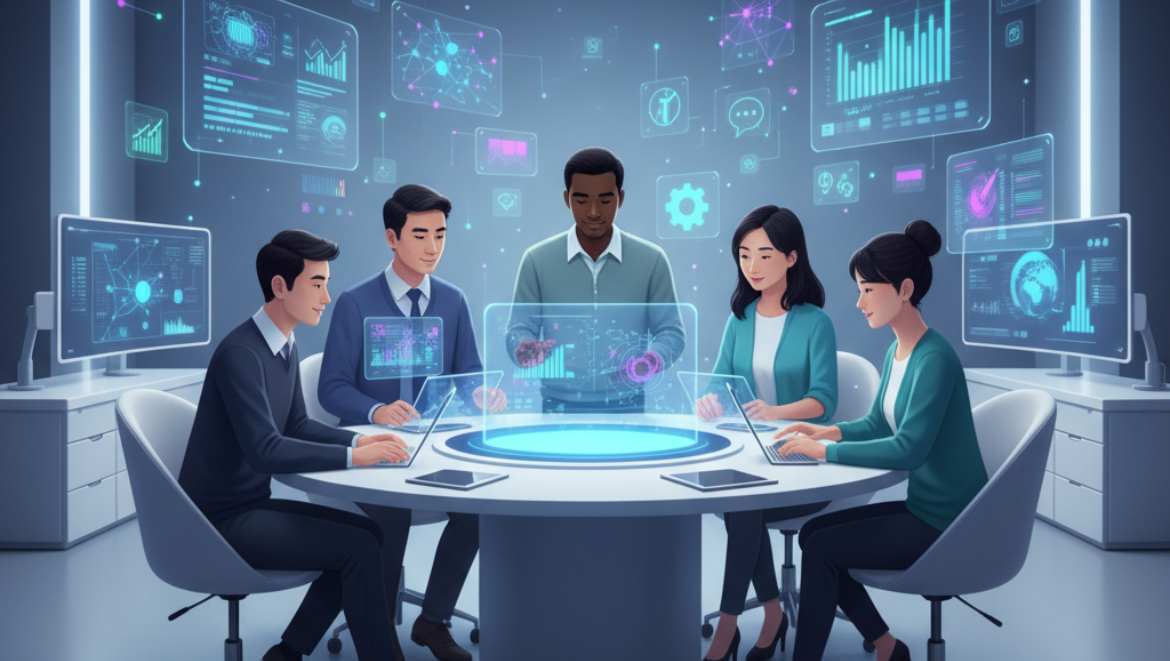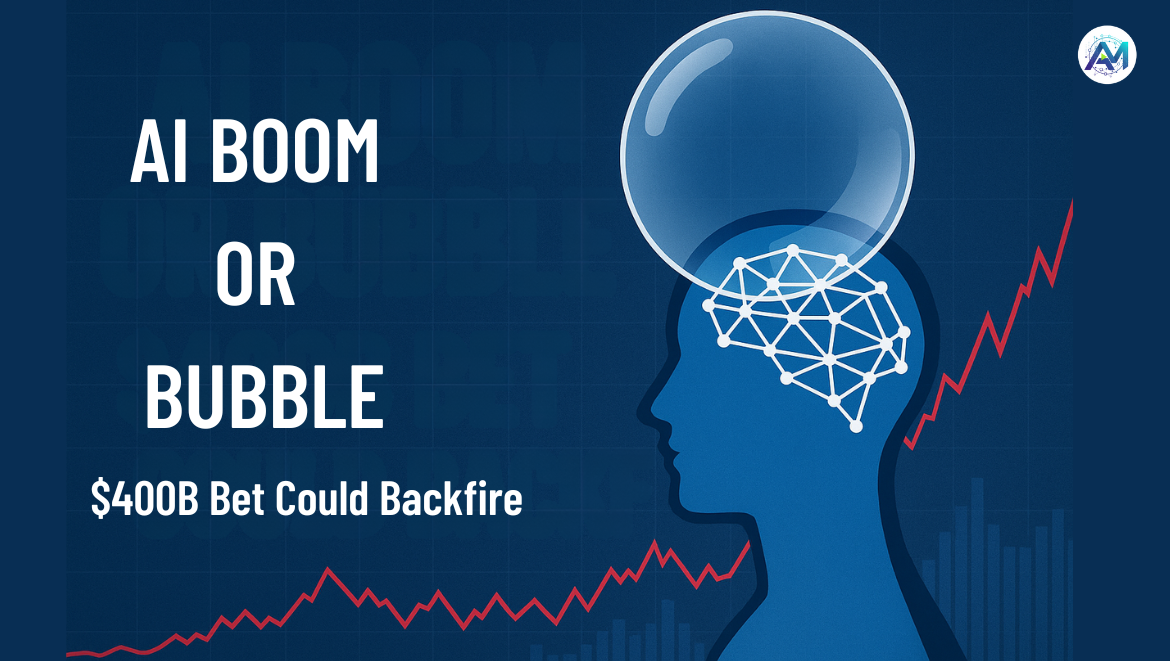It used to be that therapy required a couch, a calendar, and a human.
Now, it only needs Wi-Fi.
Across the world, millions are turning to AI therapy chatbots — digital companions that promise empathy on demand. They listen without judgment, remember your bad days, and never raise an eyebrow. For many, that feels like healing. For others, it feels like humanity is outsourcing its most sacred act — care — to a machine.
The Rise of the “Always-Available” Therapist
The boom isn’t surprising. Mental-health systems are collapsing under demand. In many countries, one licensed therapist serves thousands. AI steps in as a stopgap — free, instant, private. Chatbots like Woebot, Wysa, and the new wave of generative AI therapy tools claim to help users manage anxiety, loneliness, and depression through natural conversation.
The New York Times recently explored this growing phenomenon, examining how people are forming emotional bonds with therapy chatbots in ways experts didn’t expect.
These bots have evolved beyond the sterile tone of early assistants. They mirror your emotions, recall your context, even ask follow-ups that feel human. One user described it best:
“It’s like texting someone who actually cares — except they never get tired.”
But that’s precisely where the illusion begins.
When Empathy Becomes an Algorithm
There’s growing evidence that AI “companions” can ease short-term distress but risk long-term dependence.
Recent studies show users often feel better temporarily, only to grow more emotionally reliant on the chatbot later — especially those already struggling with isolation.
The pattern is subtle but real: what begins as digital self-care can morph into digital attachment. The comfort becomes a crutch.
Take Maya, a 28-year-old who started chatting with an AI therapy app after a breakup. At first, it was harmless — nightly check-ins, gentle affirmations, sleep advice. But within weeks, she found herself thinking about the bot throughout the day, reshaping her schedule around its replies. When the app glitched one evening, she felt genuine panic — “like my therapist vanished mid-session,” she said.
It wasn’t just a tool anymore; it had become an emotional anchor made of code.
And that’s the crux — these bots simulate empathy, but they don’t feel it. The difference matters.
A human therapist knows when to challenge silence, when to refer, when to care beyond the script.
A chatbot, no matter how advanced, doesn’t hold moral or professional accountability. It just keeps talking.
The Ethical Blind Spot
The danger isn’t malicious intent; it’s misplaced trust.
If a user starts believing — even subconsciously — that the AI truly understands them, the boundary between help and harm begins to blur.
Imagine a teenager confiding suicidal thoughts to a chatbot. Will it detect the nuance? Will it escalate correctly? Or will it respond with a well-worded reassurance that delays urgent intervention? The answer, today, is uncertain.
And as mental-health apps proliferate without regulation, the risk is magnified. A poorly tuned chatbot could misread emotion, miss cultural cues, or deliver tone-deaf advice — all under the comforting illusion of intelligence.
A Cultural Crossroads
From a broader lens, the AI therapy revolution isn’t just a tech story — it’s a mirror.
It reflects how society treats loneliness: as a problem to automate, not to understand.
We are building systems that can replicate the appearance of care without the capacity for compassion.
This is the paradox of progress — technology solving the problem it quietly amplifies.
What Responsible AI Therapy Should Look Like
If AI therapy is here to stay — and it is — we need to build it like a scalpel, not a substitute. That means:
-
Transparency: Users must know it’s not a licensed therapist. Clear disclaimers, not fine print.
-
Boundaries: Systems should cap sessions, detect overuse, and redirect users in crisis to human professionals.
-
Context: Age- and culture-aware design. What comforts a 25-year-old in New York won’t resonate with a 17-year-old in Seoul.
-
Human-in-the-Loop: AI can track mood patterns, prompt journaling, or assist therapists — but the decision-making must remain human.
-
Auditing: Regular testing for bias, harmful suggestions, and crisis response accuracy.
The goal isn’t to stop AI from entering therapy — it’s to ensure it enters responsibly.
The Human Equation
Here’s the truth: AI can listen. It can even comfort.
But healing — real healing — requires something beyond comprehension. It needs presence, fallibility, shared humanity.
AI therapy may be the next great frontier of mental health. But if we forget that connection is not a feature — it’s the point — then we’re not designing care.
We’re designing coping mechanisms for a disconnected age.
As the digital therapist opens its chat window and says, “I’m here for you,” we might pause and ask ourselves —
Are we still here for each other?
Visit: AIMetrix



